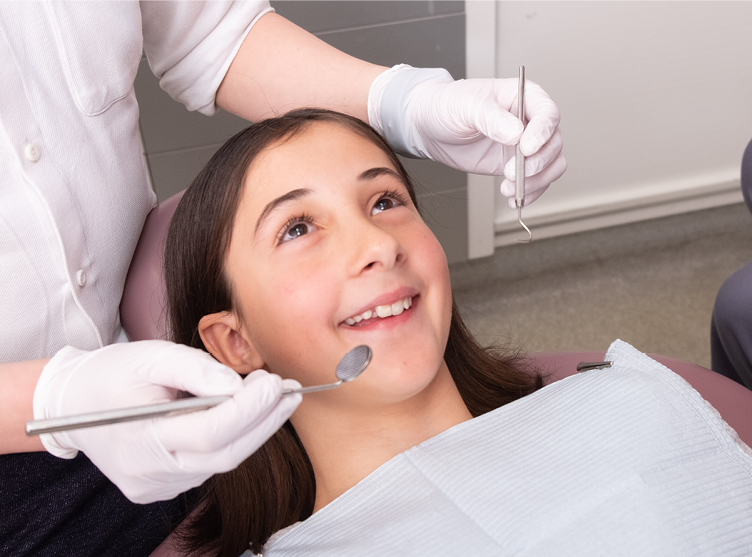What Does Legacy Orthodontics Do?
What Does Legacy Orthodontics Do?
Blog Article
3 Easy Facts About Legacy Orthodontics Described
Table of ContentsUnknown Facts About Legacy OrthodonticsLegacy Orthodontics for DummiesThings about Legacy OrthodonticsLegacy Orthodontics Can Be Fun For AnyoneLegacy Orthodontics Fundamentals Explained
At Advanced Orthodontics, we provide people with a all natural treatment experience. Additionally, we provide adjustable treatment timetables, flexible repayment options and an enjoyable, satisfying experience. leesburg orthodontics. Call ( 480) 357-4900 today to learn more and timetable a visit.An orthodontist is a dental practitioner trained to diagnose, protect against, and deal with teeth and jaw abnormalities. Orthodontists function with individuals of all ages, from youngsters to adults.
Malocclusion, or misaligned teeth, can cause oral concerns, consisting of dental caries, periodontal disease, and tough or painful chewing. Not everyone is born with straight teeth. If you have a negative bite or big rooms in between your teeth, you might intend to consult a dental practitioner concentrating on orthodontic treatment.
Rumored Buzz on Legacy Orthodontics
( Image Credit History: DigitalVision/Getty Images) Orthodontists utilize repaired and detachable dental tools, like dental braces, retainers, and bands, to transform the setting of teeth in your mouth. Orthodontic therapy is for oral problems, consisting of: Crooked teethBite problems, like an overbite or an underbiteCrowded teeth or teeth that are as well far apartJaw misalignmentThe goal of orthodontic therapy is to enhance your bite.
A healthy bite guarantees you can consume, eat, and speak properly. While you may think about orthodontists as primarily for youngsters or young adults who need braces, they can fix dental problems at any type of age. Orthodontists participate in college, dental institution, and orthodontic institution. After graduation, they invest 2 or 3 years in an orthodontic residency program.
All orthodontists are dentists, yet not all dental practitioners are orthodontists. Orthodontic residency programs provide extensive, concentrated guideline for oral experts. They focus on two areas: How to appropriately and safely move teeth Just how to appropriately lead growth in the teeth, jaw, and faceOnce an orthodontist has actually finished training, they have the alternative to end up being board certified.
The Buzz on Legacy Orthodontics
Misalignment, or malocclusion, is the most usual reason individuals see an orthodontist. It is genetic and is the result of dimension distinctions between the upper and reduced jaw or in between the jaw and teeth. Malocclusion leads to tooth overcrowding, a misshapen jaw, or irregular bite patterns. Malocclusion is normally treated with: Your orthodontist affixes metal, ceramic, or plastic square bonds to your teeth.
Some people require a headgear to assist move teeth right into line with stress from outside the mouth. A retainer is a personalized device that keeps your teeth in area.
They can develop additional area in the mouth without having to pull teeth. Orthodontists make use of wires, surgical screws, or plates to support your jaw bone.
You may require to see an orthodontist if you have: Crowding or otherwise sufficient space for all of your teethOverbite, when your top teeth come your bottom teethUnderbite, when your base teeth are as well far forwardSpacing or concerns with gapsCrossbite, which is when your top teeth fit behind your bottom teeth when your mouth is closedOpen bite or an upright gap in between your front base and top teethMisplaced midline, when the center of your base and top teeth do not align Correcting a dental malocclusion can: Make biting, eating, and talking easierImprove the balance of our face and your overall appearanceEase discomfort from temporomandibular joint problemsDifferent your teeth and make them much easier to clean, helping prevent tooth degeneration or cavities It's often a dentist who first notifications misaligned teeth throughout a regular examination.
The 2-Minute Rule for Legacy Orthodontics

Throughout your first orthodontic consultation, you'll likely have: A dental examPhotos taken of your face and smileDental X-raysPanoramic (360 level) X-rays of your face and headImpressions to create mold and mildews of your teethThese tests will assist your orthodontist recognize exactly how to wage your treatment. leesburg braces. An orthodontist is a dentist that's had training to treat your teeth and jaw
Orthodontists might perform surgery, exams,X-rays,and even more to aid you achieve an extra comfy, much healthier smile. An orthodontist is concentrated on your bite, so something like a broken tooth would be dealt with by a dental professional. Orthodontists are dental experts however not all dentists are orthodontists. Orthodontists are concentrated on your bite, or the means your teeth meshed, and the straightness of your teeth.
Ever asked yourself exactly how celebrities constantly seem to have flawlessly lined up teeth? Orthodontists are oral experts who focus on dealing with abnormalities in the teeth and jaws.
The Basic Principles Of Legacy Orthodontics

, orthodontists have a varied toolkit at their disposal. These reliable braces utilize a system of brackets adhered to the teeth and attached by wires.
Clear aligners, like Invisalign, are a popular option for clients looking for a more discreet therapy choice. These removable trays are custom-made to progressively shift the teeth's position. Headwear may be utilized combined with dental braces or aligners to use extra targeted forces, especially for fixing jaw disparities. In situations of narrow jaws, palatal expanders can be used to produce area for proper Our site tooth positioning.
Report this page